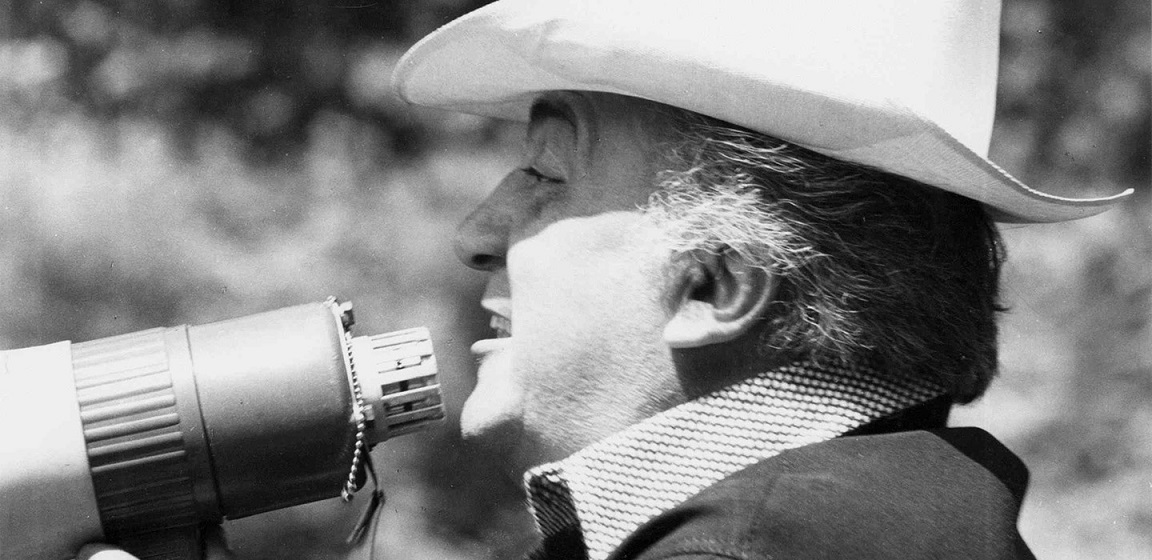
Guida pratica
Cine-itinerary dedicated to Fellini

The cinema with its stories and its authors can reveal a territory and its treasures in a unique way. The first cine-tourism itinerary dedicated to Federico fellini is born. It will lead travelers to evocative places or movie sets that have been important for the life and creative universe of the master, proposing the experiences lived through his eyes. The itinerary that is dedicated to the director of 8½ and his city, Rimini, branches into three directions: the 'City of Memories', the 'City of Dreams' and the 'City of Cinema'. Each itinerary represents a part of Fellini's life.
The City of Memories
Fellini was born in Rimini in 1920 and stayed there until 1939 when he moved to Rome. It was during this period that he began to create the ‘mythology of childhood’ which can be found throughout his works. THE HOUSES Fellini was born in via Dardanelli (A1). The family then moved just down the road to Palazzo Ripa, in Corso d’Augusto 6, now 115 (A2), and then in 1926 to Palazzo Ceschina in via Gambalunga 48, now 91 (A3). He finally moved to via Dante 9, now 23, in 1931. (A4). His grandparent’s house on his father’s side can be found just outside Rimini in Gambettola, (A5), this is the countryside farmstead in a famous sequence from the film 8 ½. SCHOOLS Fellini went to primary school in via Brighenti 38, and the gym in via Tempio Malatestiano, now 24 (A6). These are the years of Omero and the “pugna” evoked in Amarcord. ROADS AND SQUARES The cars from the Mille Miglia race would run over the Tiber bridge (A7) just as was portrayed in Amarcord, towards Corso d’Augusto. Piazza Cavour (A8), Piazza Tre Martiri (A9) and Piazza Ferrari (A10) served as a backdrop for famous sequences from Amarcord: the scene with the peacock on the Pigna fountain, the “moustache” on the bicycle, and the scene with the Partisan Monument from the First World War. The circus from The Clowns used to be set up in Piazza Malatesta (A11).
The City of Dreams
Throughout his films, Fellini made Rimini into a place where the soul reigns supreme, a mythical dimension, a place you always want to come back to. Around this city and it’s magical places, Fellini created a universal idea of beauty. THE PALATA (B1) The Rimini pier in winter is the emblem of the Vitellonis. In Amarcord, the motorcyclists’ theatre in Scurèza in Corpolò is the place where the boats leave to meet the Rex. THE GRAND HOTEL (B2) Federico Fellini Park. Inaugurated in 1908, it is the symbol of the Belle Époque, and for a young Fellini, forbidden desires: “The Grand Hotel represented wealth, luxury and lavish westerners.” The director stayed here every time he came back to Rimini, in room 316. THE FULGOR (B3) Corso d'Augusto, 162. The cinema where Fellini saw, as depicted in Rome, his first film - Maciste in Hell, and he discovered the magic of the cinema. It is here that Titta, the protagonist of Amarcord tries and fails to seduce Gradisca. Reopened in 2018 with the scenery and props of the three time Oscar winner Dante Ferretti, the Fulgor evokes everything that cinema represents: dreams, fantasy and wonder. Today the Fulgor Cinema is one of the axes of the FELLINI MUSEUM, inaugurated in 2021. Included by Mibac among the great national projects of cultural heritage, it is a magical place of artistic synthesis that develops between Castel Sismondo, the fifteenth-century fortress to whose project Filippo Brunelleschi contributed; Palazzo Valloni, an eighteenth-century building, where the Fulgor cinema is located on the ground floor; and a large urban area, a real Piazza dei Sogni with green portions, arenas for shows and artistic installations, which form a real cultural center and which embraces, in a ring that is not only symbolic, the Fellini Museum, the theater Galli and the Part - Palaces of art. A space that creates emotions and entertainment in which innovation, research and experimentation come to terms with the classicism of art. A museum that does not intend to interpret Fellini's cinema as a finished work in itself, as a shrine or homage to memory, but as the key to «everything is imagined».
The City of Cinema
Everything in Fellini’s cinema is an ode to Rimini and everything in the city of Rimini is an ode to Fellini. THE SAN GIULIANO QUARTER (C1) Recalled in The Clowns it is a concentration of squares, alleyways and houses covered in murals that depict characters and scenes from Fellini’s most famous films. THE BOOK OF DREAMS (C2) On these pages, Fellini wrote down and illustrated his dreams for over 30 years, his inspiration for his films. It is currently being shown in the City Museum in via Luigi Tonini, 1. THE RING (C3) This work by Mauro Staccioli in piazzetta Zavagli evokes a scene from Amarcord that never made the final cut, when Count Zavagli’s daughter’s ring was found in a black well. Today THE FEDERICO FELLINI STUDY CENTRE (C4), where there are original documents, archived materials, photographs, drawings, scripts and articles, is incorporated into the new Fellini Museum. THE BIG BOW (C5) Arnaldo Pomodoro’s monument to remember Fellini, commissioned by his wife Giulietta Masina and his son Pier Federico. In Petrella Guidi there is a Name Field, a sanctuary of peace (C6), that the poets and scriptwriter Tonino Guerra wanted to dedicated to his director friend and his wife.
Download the Cine-itinerary map

©2016-2023 Assessorato al turismo / Comune di Rimini, Piazzale Fellini 3 47921 - Rimini - +39 0541 704587 / Ufficio Informazioni Turistiche (IAT) +39 0541 53399 / fax +39 0541 56598 / Statistiche web

